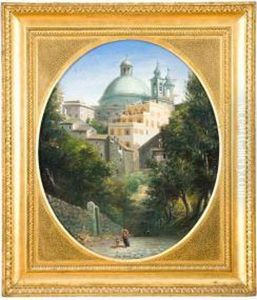Luigi Ricci Paintings
Luigi Ricci, not to be confused with the 19th-century Italian composer of the same name, was a prominent figure in the realm of art conservation and restoration during the 20th century. Born in 1893 in Italy, Ricci dedicated his life to the preservation of art, contributing significantly to the methodologies and practices of art restoration. His work spanned a critical period in the history of art conservation, a field that was undergoing significant transformation and professionalization during his lifetime.
Ricci's contributions were not limited to hands-on restoration projects but also encompassed scholarly research and education. He was known for his meticulous approach to restoration, emphasizing the importance of preserving the original intent and integrity of the artworks. Throughout his career, Ricci worked on numerous important projects, including the restoration of frescoes and paintings that had suffered damage over centuries. His expertise was sought after by museums and cultural institutions, and he played a vital role in the development of conservation techniques that are still in use today.
Beyond his practical work, Ricci was an advocate for the scientific study of art materials and degradation processes. He was among the early proponents of using scientific analysis to inform restoration practices, arguing for a collaborative approach that involved chemists, historians, and conservators. This interdisciplinary perspective helped to elevate art conservation to a more rigorous and respected discipline.
Luigi Ricci's legacy is evident in the generations of conservators he influenced through his work and teaching. He was a mentor to many in the field, sharing his knowledge and passion for art preservation. Ricci's dedication to the discipline of art conservation helped to ensure that countless works of art could be enjoyed by future generations. He passed away in 1981, leaving behind a lasting impact on the field of art conservation and restoration.

